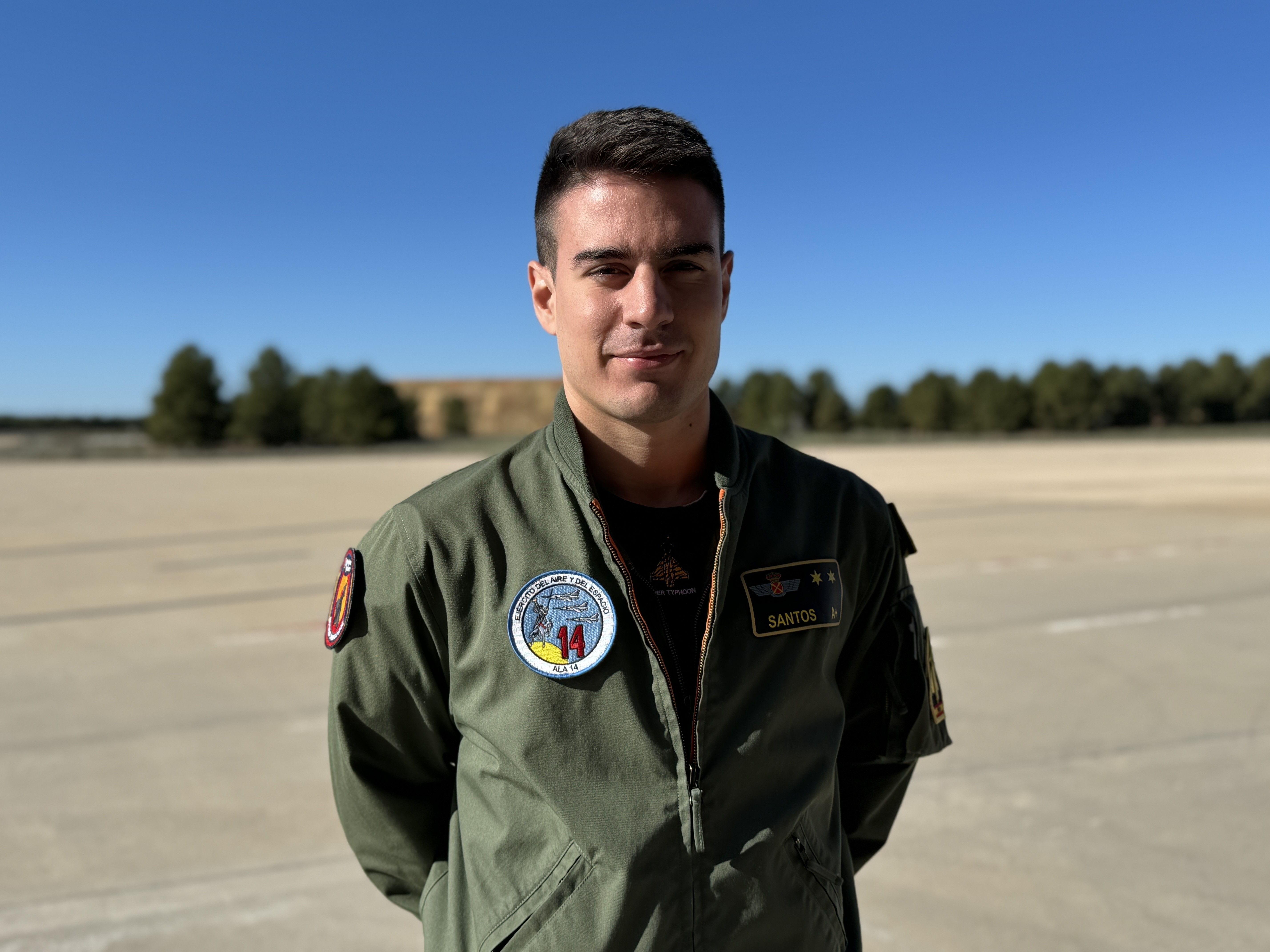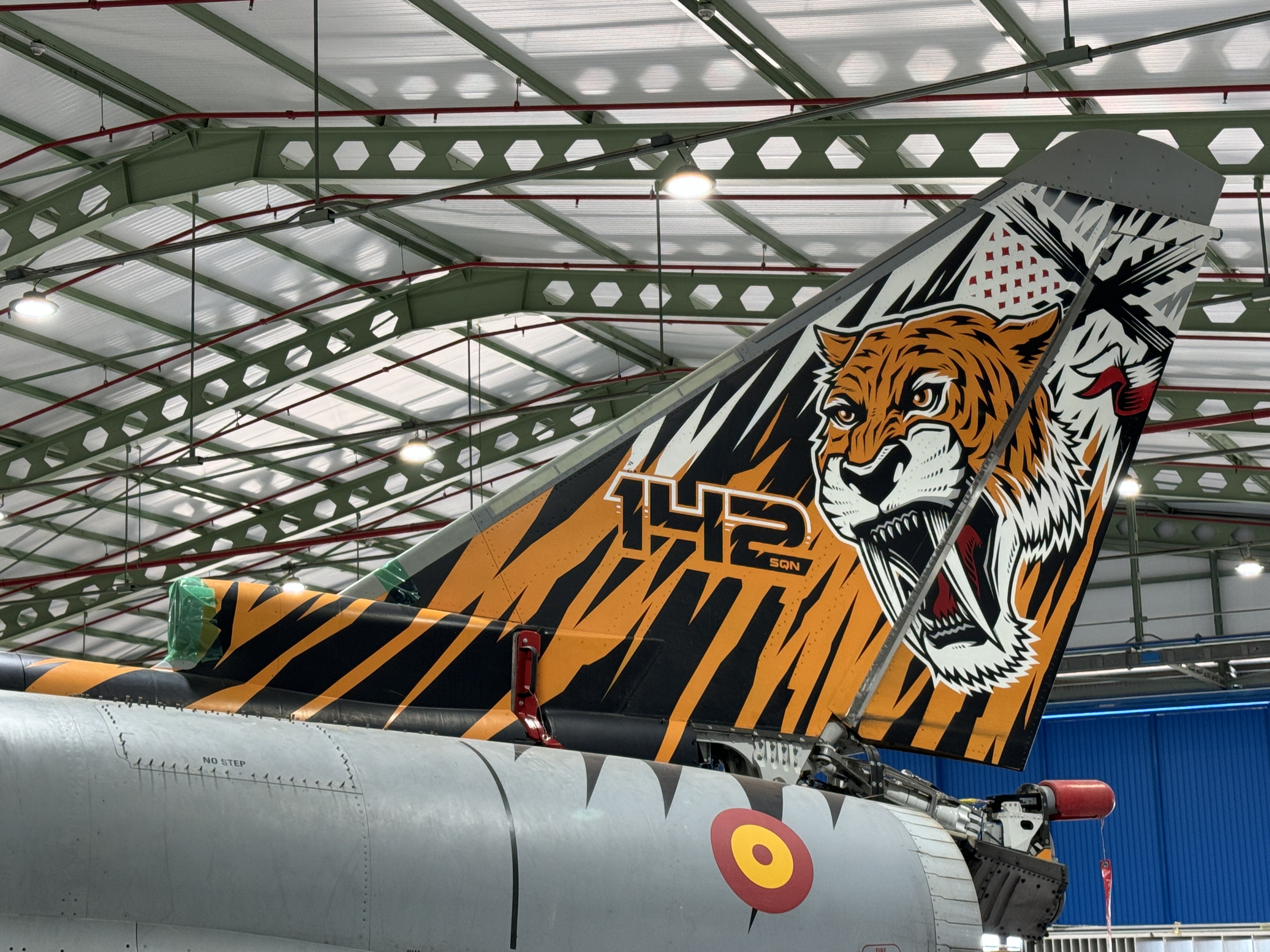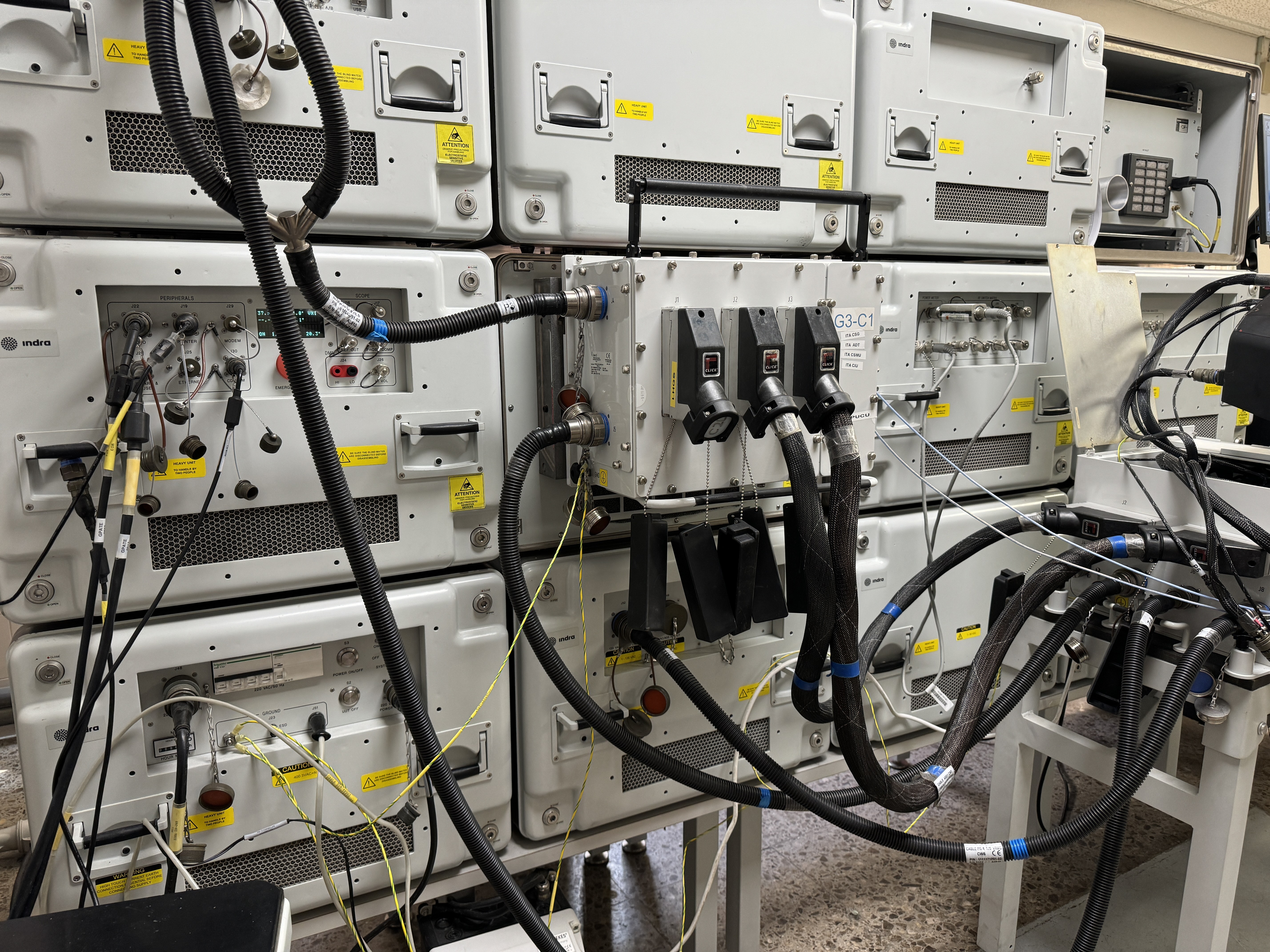Spanish Air and Space Force Colonel Ignacio Zulueta’s office at Albacete Air Base is normal in every respect but for two things.
The first is the doorway that leads up to the air traffic control tower directly above his office. The second is the view from his balcony. It’s incredible — every aircraft enthusiast’s dream.
From there Colonel Zulueta can look out across the base’s extensive runway – the balcony is at the midpoint. It’s perfect for viewing the work of the ALA 14 Wing in their Eurofighter Typhoon jets. It’s a window into a distinctive world.

“This is a unique base because of the three different units that we have here,” says Colonel Zulueta, who still flies each week.
“We have ALA 14 Wing, which celebrates its 50th anniversary this year, the Eurofighter air defence wing. Then, we have the Maestranza, which is responsible for the overhaul and deep maintenance of all our fighter jets, including Eurofighter and F-18, as well as various training and logistics aircraft.
“The third unit is the Tactical Leadership Programme (TLP). Normally a small unit, they conduct huge flying courses four times a year when the base receives around 40 visiting fighter jets and around 1,000 people.”
Centrally located on the Iberian Peninsula, Albacete benefits from being both close to the capital, Madrid, but also from having an airspace that offers pilots a huge training area.
Eurofighter is the backbone of the Spanish Air and Space Force and it is the backbone of the NATO alliance here in Europe. It's an exceptional aircraft that allows us to do our job. It's capable of intervening in any kind of mission or operation and it can operate alongside other nations
“There are no civilian airways above us so this is the main training area,” says Colonel Zulueta. “We just have to take off and start the training mission. You don't lose any power or fuel travelling to the training areas. That's also why the TLP is here.
“We are in the middle of the peninsula, so it's very easy for us to reach any point of the airspace that Spain is responsible for — we can go anywhere we need to very fast.
“Eurofighter is the backbone of the Spanish Air and Space Force and it is the backbone of the NATO alliance here in Europe. It's an exceptional aircraft that allows us to do our job. It's capable of intervening in any kind of mission or operation and it can operate alongside other nations.”
ALWAYS ON ALERT
ALA 14 is always busy. For example, during our visit five aircraft were in Romania on deployment, but their primary focus is Quick Reaction Alert (QRA). Pilots and crews are on 24/7 duty, 365 days a year, primed and ready to respond to any request from NATO.
Eurofighter pilot Lieutenant Alejandro Fernández Santos says: “Our main goal is to protect the Spanish airspace, so we dedicate a lot of resources to the QRA missions.
We have a building next to the runway, with two planes always ready to take off.”

He agrees that the aircraft is ideal for this work. “Eurofighter’s thrust-to-weight ratio and its facility to gain energy is just awesome. It can reach speeds of up to Mach 2, which is great for a fighter. It can also carry a large payload. That all means we can carry out a wide range of missions — both air-to-air and air-to-ground. It’s easy to change from one to the other in the same aircraft.”
Lieutenant Santos says that flying is relatively straightforward because of Eurofighter’s carefree handling system. This allows the pilot to concentrate on the mission — managing all the different sensors and making sense of the information that comes their way.
He’s also excited about the future direction of the aircraft. He says: “Eurofighter is a relatively new aircraft and still in development. We strongly believe that its capabilities will help us maintain national security for many years to come. Even now projects are being carried out by industry to improve capability further — like, for example, the new radar. We are very excited about the future.”
After completing his five-year military training at the national academy, Lieutenant Santos selected Albacete and has no regrets: “I wanted to fly the Eurofighter and here at Albacete we have the most up-to-date of the aircraft.
"The best part of living here for me is the work. I think we have amazing personnel in general, and the aircraft is great.”
And with the 50th-anniversary celebrations being in 2024 for ALA 14 it is going to be a year to remember for Lieutenant Santos and his colleagues.
TEAM SUPPORT
Of course, while the pilots and their aircraft always attract a lot of attention, there is a whole team of people behind the scenes working hard to ensure they can carry out their missions and training flights.
In the maintenance hangar, Lieutenant Pablo Eusa López de Murillas explains that after each flight the aircraft are checked over and any issues are addressed.

“In addition to these checks, there are planned period inspections for each aircraft depending on flying hours or time. Some things are checked every few months and we have inspections after 200, 400, 500, 600, 800 flying hours. Each inspection requires several tasks to be performed on the aircraft.
“Eurofighter has a lot of advantages because of the design concept. Almost every part of the aircraft can be removed easily and exchanged for another part, which is a good way to work because it's very fast and very easy to fix certain things.
Pablo says that even a large component like an engine can be removed relatively easily in a matter of hours.
Pablo, who studied for a degree in aeronautical engineering, says the team often talk with other engineers at Moron and the wider Eurofighter community. “We exchange information between nations and discuss common problems. You may have a question and someone else already had the solution before so it is good to have forums like the European Air Group. Working together like this, with the Germans, Italians and UK engineers, maximises your knowledge.”

The unique mix of units makes Albacete a special base – it also makes for a unique blend of military and industry people. It’s a common model across the Spanish Air and Space Force.
Colonel Zulueta says: “We have a lot of engineers from the industry here and many work side by side with our military people. That’s beneficial because it is easier to solve issues when they arise if you can talk directly to the people who design the systems.”
INDUSTRY PARTNERS STANDING BY
A perfect illustration of this approach is the team from Indra, which provides support for the team at an electronic workshop.
Indra, a Spanish company with a global footprint, is the second-largest supplier of avionics systems for the Eurofighter Typhoon. At Albacete, it has had a team directly involved in helping the maintenance teams improve availability levels with a unique support model for more than a decade.
Jose Vicente Ruiperez Angulo, who was Indra’s Head of the Eurofighter Support Programme for over 10 years, says: “We have created a support model with our customer (the Spanish Air and Space Force) that was designed to reduce the number of pieces of equipment that were being sent for repair.

The programme has been successful in analysing failures and reducing the number of equipment repairs required off base.
“We have learned over time and increased the numbers of engineers involved. We now have around 30 people at both Albacete and Moron Air Bases and we are constantly innovating the solutions. It's important to be working side by side with the customer because it allows you to have all the information you need to provide the right solution.”
Lieutenant Pablo agrees: “Sometimes our reality means we have to do things differently. That’s why it is important to have people right here on the ground to see how things work day to day.”
Getting to the right solution for Indra includes developing specific tools and systems like Orion, which can load software on aircraft without the maintainers having to power up the aircraft. The team are also using AI and machine learning to analyse over 6,000 hours of flying to learn more about how the different pieces of equipment wear over time and develop a predictive approach.
This team approach is a theme echoed by the Base Commander. Colonel Zulueta says: “Eurofighter is a European project. It is good for us in Spain and good for Europe too.
“We have to stick together, we have to collaborate and we have to follow this road.
“Eurofighter is the base of the defence industry, not only in Spain but in Germany and the UK too.”
That’s a good base to build on.
